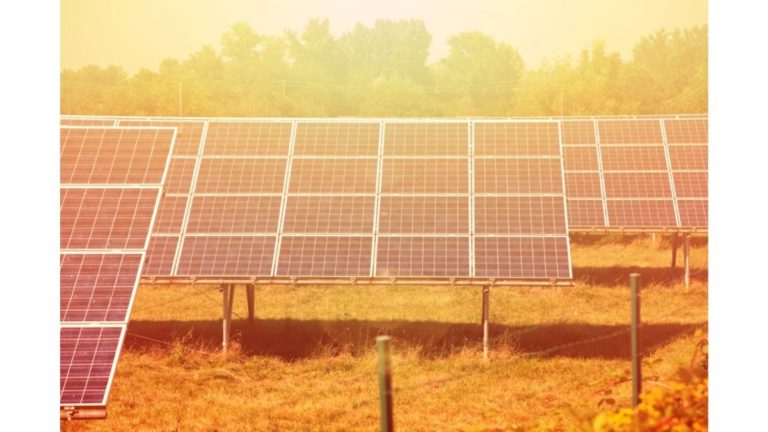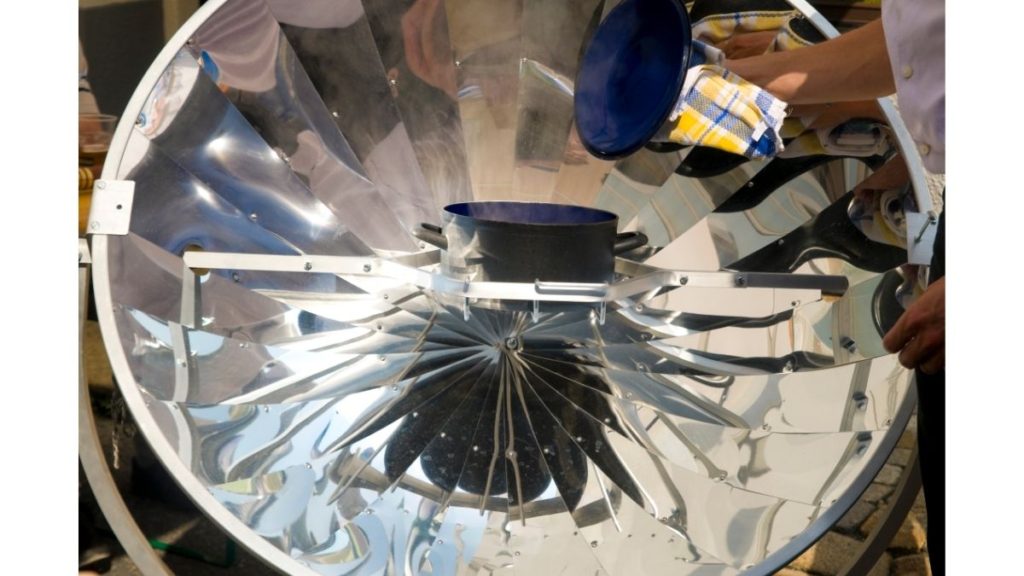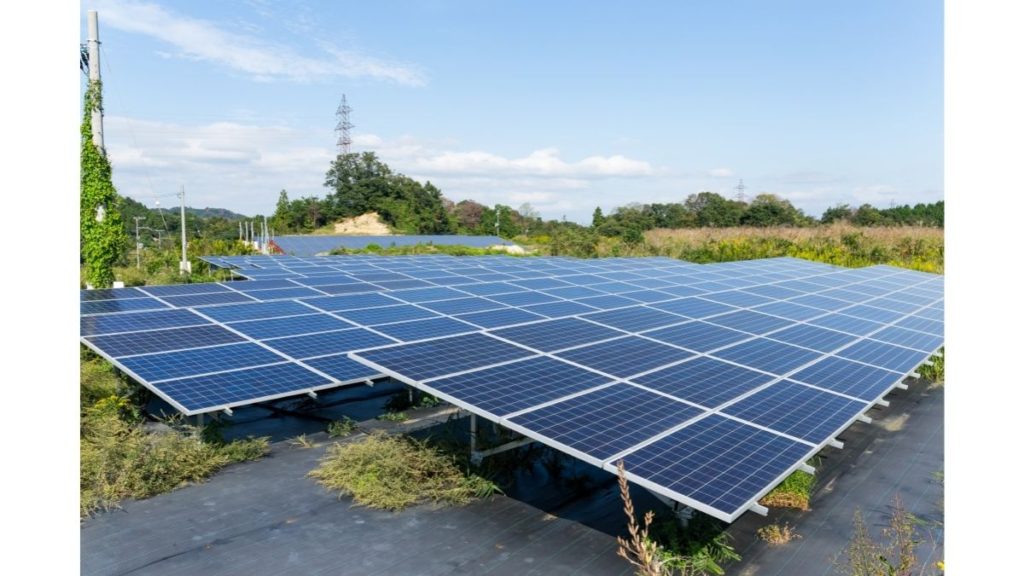Solar Energy reaching the earth is 1.5 × 1018kWh/year. It can meet all future energy needs if properly exploited. Solar energy, in contrast to finite fossil fuels, is increasingly becoming appealing as a renewable energy source in the twenty-first century due to its limitless supply and nonpolluting nature. In this blog, I will show you what is solar energy, different ways to harness it, future scope, advantages and disadvantages of it.
Let’s begin with the definition of solar energy.
What is Solar Energy?
Sun emits radiation in the form of electromagnetic waves in all directions. This radiation has the potential to increase the temperature of materials, cause chemical reactions and generate electricity. Solar energy is the radiant heat and light from the Sun that we capture using a variety of technologies, including solar power to create electricity, solar thermal energy, such as solar water heating, and solar architecture.
Nearly half of the sunlight that reaches the earth is visible light, with the remaining 45% consisting of infrared radiation and smaller amounts of ultraviolet and other kinds of electromagnetic radiation. We can directly exploit solar energy in two ways:
- by collecting radiant heat and utilising it in a thermal system.
- by collecting and immediately converting it to electrical energy using a photovoltaic system.
The former is referred to as a ‘Solar Thermal’ system, while the latter is referred to as a ‘Solar Photovoltaic’ system.
Also read: Sustainable Cities -Features Full Guide
Solar Thermal Energy
Solar energy has a comparatively lower density per square metre (1 to 0.1 kW/sq. m.). Hence, we have to collect it using solar thermal collectors that cover a huge area of the ground. Even in sunny regions of the world’s temperate zones, a collector needs a surface size of around 40 square metres (430 square feet) to collect sufficient energy.
In a solar thermal system that converts the sun’s energy into useful heat, the solar thermal collector is the initial unit. A solar thermal collector takes in solar energy in the form of heat. And, then efficiently transfers it to a heat transport fluid. The transport fluid delivers this heat to a thermal storage tank, a boiler, or a heat exchanger, for later use  .
.
The way they collect solar light determines their classification. The non-concentrating type solar collector absorbs radiation as it strikes the collector’s surface. The concentrating type raises radiation concentration per unit area using mirrors or other devices before absorbing it. We can further classify the concentrating type into focus and non-focus varieties based on the procedures used for radiation concentration.
Let’s have a look at how the Sun’s energy is used for cooking food in solar cookers.
Solar Cookers
Cooking, drying, and pasteurisation are all done with solar cookers. An insulated container with a clear lid makes up a basic box cooker. The clear lid permits the transmission of heat into the box from the sunlight falling on top of it. The insulation prevents the escape of heat from the container. As a result, the temperature inside the container rises and food gets cooked.
The three basic categories of solar cookers include:
- Box cookers
- Panel cookers
- Reflector cookers
Box cooker works well in the partially overcast sky and reaches temperatures of 90–150°C (194–302 °F) on average. Panel cookers are similar to box cookers in that they employ a reflective panel to direct sunlight onto an insulated container.
Reflector cookers focus light on a cooking container using various concentrating geometries (dish, trough, Fresnel mirrors). These cookers achieve temperatures of 315°C (599°F) and higher, but they require direct light. Hence we must move the cooker with respect to the Sun’s direction.
Solar Photovoltaic Energy
Solar cells or photovoltaic cells convert solar light directly into electricity. When light hits the junction between a metal and a semiconductor such as silicon or the junction between two separate semiconductors, it creates a small electric potential.
The photoelectric effect frees an electron when sunlight strikes a solar cell. The electrons flow through the external circuit, giving power to the load, due to a natural difference in electric potential (voltage) between the two different semiconductors.
A single solar cell typically produces only approximately two watts of power. We can generate thousands of kilowatts of electric power in a solar electric plant or by connecting a large number of individual cells, as in solar-panel arrays. Most modern solar cells have an energy efficiency of only 15 to 20%.
Solar Power Plants
Concentrated solar power plants use concentrating, or focusing collectors to focus sunlight from a large area onto a small blackened receiver. This greatly increases the light’s intensity and allows for high temperatures. Arrays of well-aligned mirrors or lenses focus enough sunlight to heat a subject to temperatures of 2000 degrees Celsius (3,600 degrees Fahrenheit) or higher.
This heat can then be used to power a steam turbine electric generator power plant by operating a boiler, which generates steam. The moveable mirrors can be set to concentrate huge amounts of solar radiation onto blackened pipes through which water is pumped and therefore heated to produce steam directly.
Also read: Sustainable Architecture
Advantages of Solar Energy
Solar Energy offers a myriad of benefits like:
- Solar energy is a renewable and clean source of energy.
- After the installation of a solar panel, the production of solar energy is almost free.
- Solar energy will last indefinitely, whereas the world’s oil supplies may exhaust after 30 to 40 years.
- Does not pollute the environment.
- Solar cells don’t generate any noise at all. On the other hand, the massive equipment used to pump oil, , are exceedingly noisy and thus impracticable.
Disadvantages of Solar Energy
There are some demerits of solar energy that we can’t overlook. They are:
- Solar panels are costly to install, resulting in a long time for energy bill savings to match early investments.
- Electricity generation is solely dependent on a country’s exposure to sunlight, which depends on the climate and location of that country.
- Solar power plants do not produce the same amount of energy as conventional power plants of comparable scale.
- Solar energy is utilised to charge batteries, allowing solar gadgets to be used at night. The batteries are huge and heavy, taking up space and requiring regular replacement.
- Lastly, solar panels require a lot of maintenance because they are fragile and easily damaged.
Despite these demerits, the future looks bright for solar energy. Let’s have a sneak peek into the future.
Solar Energy Future
Silicon solar cells are expected to continue to fall in price and be installed in huge numbers in the near future. These cost reductions are expected to raise solar power production by at least 700% in the United States by 2050. Meanwhile, work on new solar cell designs that are both more efficient and less expensive will continue.
We anticipate the arrival of alternatives to silicon on our solar farms and rooftops in the coming years, assisting in the provision of clean and sustainable energy sources. Increased bulk solar cell manufacturing and new technologies that make solar cells cheaper and more efficient will continue to enable these advancements.
Shall we wrap up?
Conclusion
Solar Energy if properly harnessed can greatly reduce our dependence on fossil fuels and help us reach carbon neutrality. It is a green and non-polluting renewable source of energy that can meet all the energy demands of future generations. Let’s shift to solar energy and go green.




Comments are closed.